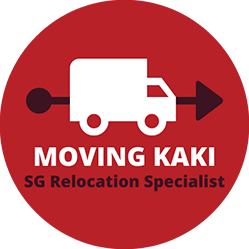Moving an office isn’t just like moving a house; it’s very complicated and needs to be done on time. You need to protect IT data and equipment, stick to your budget, and keep your team and clients informed to avoid any issues.
To make your office relocation smooth and safe, we have shared important steps on how to prepare for an office move.

How to Prepare For an Office Move?
An office move isn’t just about packing boxes. It’s about making sure your team stays productive, your data is safe, and your business runs with as little disturbance as possible. That’s why good office moving preparation is important. Let’s discuss it step by step.
1- Appoint a team
This is the time to start planning everything carefully so your office move smoothly. Start by choosing someone in charge of the move; this could be you or someone else from your team. If your office is big, you might want a small group to help manage different parts, like packing, setting up the new space, or handling tech stuff.

2- Set a Timeline and Budget
Next, create a clear moving timeline for each task. Write down when to start packing, when to move furniture, and when to notify clients. This will help you stay on track and avoid last-minute stress. At the same time, make a realistic budget. Include movers’ costs, packing materials, new furniture (if needed), internet setup, and even money to cover any delays.
3- Notify Your Landlord
If you’re renting your current space, tell your property manager about your move. Check your lease to see how much notice you need to give; it’s usually around 30 to 60 days. Make sure to give notice on time because it will help you avoid penalties and allow the landlord to prepare the space for new tenants.
4- Visit New Office
Before moving, visit the new office in person. Take measurements of each room so you can plan where furniture and equipment will go. Check if there are enough power outlets and if internet or phone connections need to be set up. This will help you plan the layout and avoid problems after the move.

5- Know the Building Rules
Talk to the building manager at your new office and ask about any move-in rules. Some buildings require you to book the elevator or only allow moves during certain hours. You might also need to fill out the form with proof of insurance from your movers. Make sure you follow their guidelines to avoid problems on moving day.
6- Notify Clients, Vendors, and Business Partners
Don’t forget to tell people outside your office that you’re moving. Send an announcement email to clients, vendors, and other business contacts. Post an update on your website and social media to inform everyone where and when you’ll be moving. This helps avoid confusion, missed deliveries, or communication delays during your move. Also, don’t forget to update your business address in the Google Business Profile.
7- Take Inventory of Office Items
Before you start packing, write down everything you’re planning to move. This includes:
- Desks, chairs, and other furniture
- Computers, printers, and other electronics
- Files, papers, and office supplies
- Kitchen items like a kettle, microwave, or fridge
This list will help you stay organised and make sure nothing gets lost during the move. It also helps you see what you don’t need anymore.
8- Pack and Label Carefully
Two weeks before the move, start packing items you don’t use daily, such as old files, storage room items, and extra office supplies. Make sure every box is clearly labelled with what’s inside, what department it belongs to, and where it should go in the new office. This saves a lot of time when unpacking.
A good trick is using colour-coded labels, such as red labels for the Sales department and blue labels for HR. This way, your movers know exactly where to place each box in the new office.
9- Hire a Professional Moving Company
Even if you have planned everything well, you will need the help of professional movers. Look for companies that have experience with office moves; they’ll know how to handle desks, computers, and other equipment safely. They know how to get the job done quickly and without causing damage. Some movers even offer extra services like packing, setting up furniture, or reconnecting your computers and internet in the new place. This can save you and your team a lot of time and effort.
But before hiring, ask them if they have insurance to cover any damages and check if they’ve done office moves before. Always get quotes from a few companies and choose the one that fits your needs and budget. Also, try to book them early so you can choose a date that works for you.

Conclusion
An office relocation takes time, teamwork, and planning, but with a clear checklist and good communication, you can make the office moving process much easier. Start early, stay organised, and involve your team in each step. And don’t forget to hire professional office movers if needed. A well-planned move not only saves time and money but also helps your team settle quickly into the new space so you can get back to business without delay.
FAQs
How early should I start planning an office move?
Start planning at least 3-6 months in advance to allow enough time for organisation, hiring movers, and notifying all parties involved.
What is the most important part of office moving preparation?
Proper communication and data backup are very important. Keeping your team informed and protecting your information are top priorities.
Can we move office items without a professional mover?
Technically, yes, but hiring professionals is safer and more efficient, especially for handling office equipment and heavy furniture.
What should I do after the move?
Check that everything works, update your address in all records, and get feedback from employees to address any issues quickly.

